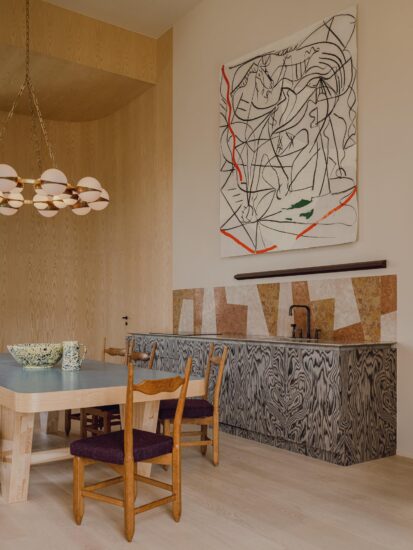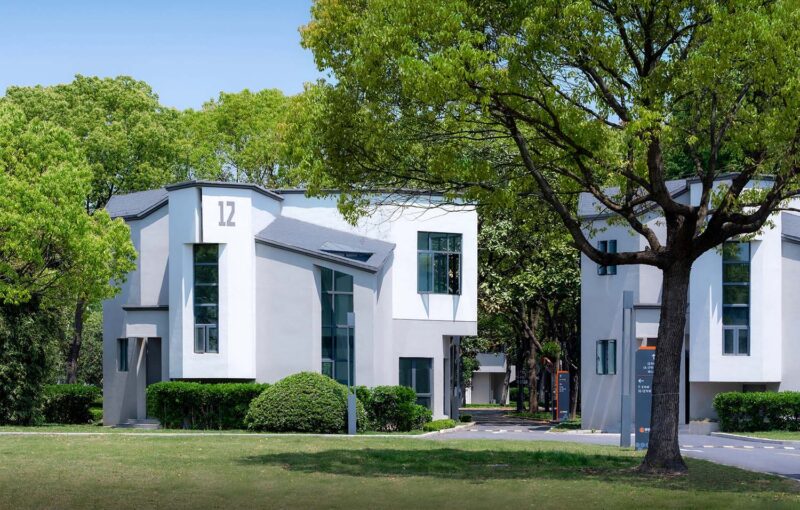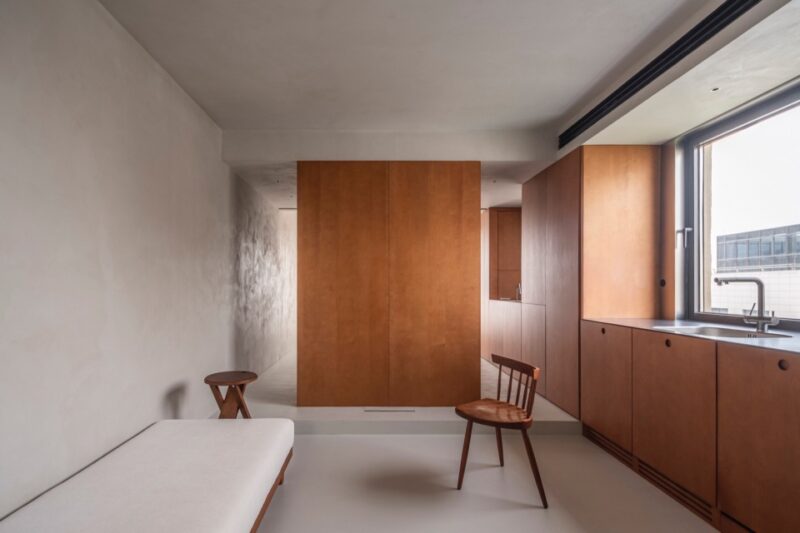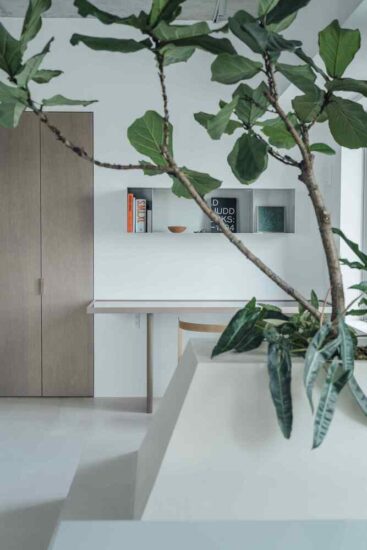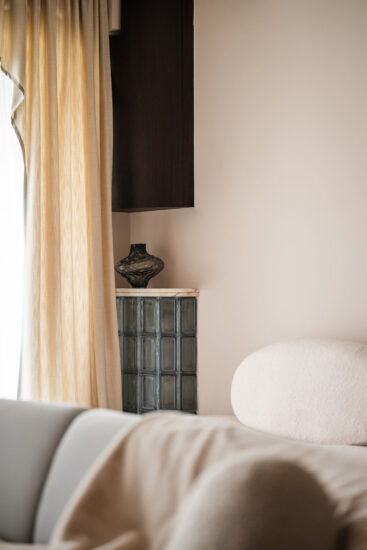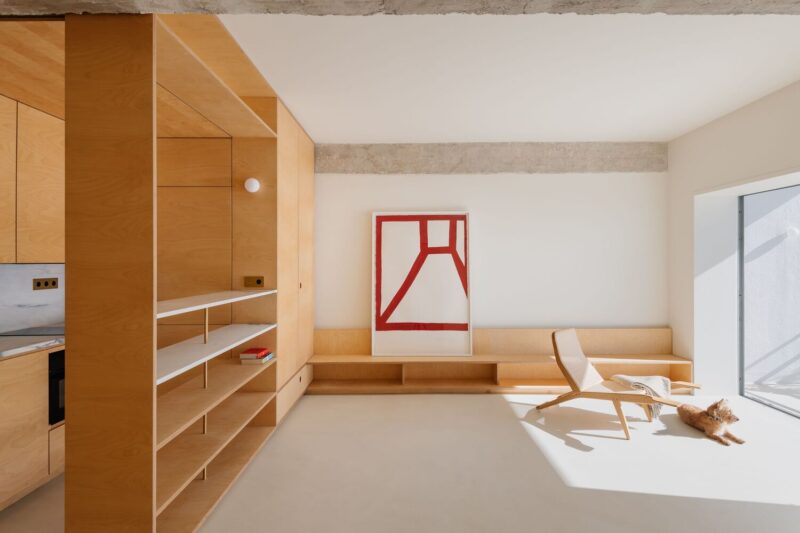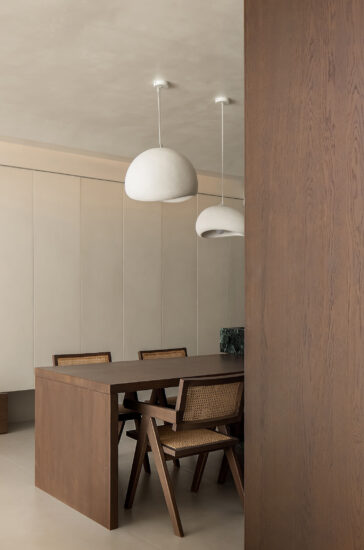源自共同的设计价值观,东京本土设计工作室Keiji Ashizawa和哥本哈根的Norm Architects建筑事务所的合作根植于对材料丰富和永恒吸引力的相互欣赏和热爱,这在两种设计传统中都很明显。
Emerged from shared design values, the collaboration between Tokyo-native design studio, Keiji Ashizawa and Copenhagen-based Norm Architects takes its root in mutual admiration and a love for material richness and timeless appeal evident in both design traditions.
东京Kinuta Terrace公寓楼建于20世纪80年代,共有36个单元,围绕着一个郁郁葱葱的中央庭院布置,旨在给居民带来花园住宅般的体验。Keiji Ashizawa Design和Norm Architects合作改造了其中两套公寓,尽管它们都靠近绿色花园,但仍感觉黑暗和封闭。
Constructed in the 1980s, the 36-unit Kinuta Terrace apartment block in Tokyo is arranged around a verdant central courtyard that’s meant to give residents the experience of living in a family home with a garden.Keiji Ashizawa Design and Norm Architects have collaborated to transform two of the apartments which, despite their proximity to green space, felt dark and closed off.
工作室想要创造一个“所有元素都尽可能紧密相连的环境”。
Together, the studio’s wanted to create “an environment where all elements are as closely connected as possible”.
“从大多数房间看出去,自然感觉融入了公寓,所以当你眺望庭院时,你不能完全确定自己身处东京这样的大城市。”
“Nature feels integrated into the apartment from most rooms so that, when looking out into the courtyard, you can’t quite tell you’re in a city as immense as Tokyo.”
两套公寓的内部布局经过重新配置,形成更少但更大的生活空间,自然光可以更自由地流动。
The internal layout of both apartments have been reconfigured to form fewer, but larger living spaces through which natural light can flow more freely.
整个墙壁都覆盖着混凝土,而地板则铺着橡木板。 木材还被用于在家中制作几种固定装置,比如厨房橱柜和公寓书房里的高大的书架。
Walls throughout have been overlaid with concrete, while floors are clad with oak-wood boards. Timber has also been used to craft several fixtures in the homes like the kitchen cabinetry and tall, book-lined shelving units that appear in the apartments’ studies.
宽大的窗户前悬挂着透明的沙色窗帘,使庭院的景色在很大程度上得以展现。泥土色调的陶瓷花盆点缀在周围作为装饰。
Sheer, sand-coloured curtains that are suspended in front of the expansive windows keep views of the courtyard largely on show.Earth-toned ceramic plant pots have been dotted around as decor.
Werner解释说:“我们一直在努力引入自然的、有触感的、随着时间推移而变得美丽的材料。众所周知,人们用他们所有的感官连接到他们的环境,但最近似乎我们已经忘记了这些基本连接,我们希望用公寓选择的材料带回一些东西。”
“We have strived to bring in materials that are natural, tactile and patinate beautifully with time,” explained Werner.”It’s well known that people connect to their environments with all their senses, but in recent times it seems like we have forgotten these basic connections, something we wish to bring back with the materials chosen for the apartments.”
Keiji Ashizawa和Norm建筑事务所与日本家具品牌Karimoku合作,为这些住宅设计了一系列的家具——它们将一起在该品牌的姐妹公司Karimoku Case Study下销售。其中包括一个带有柏木框架的浅灰色沙发,一个带有薄薄的黑色玻璃窗的咖啡桌,餐椅是用Karimouku工厂里发现的木头下脚料制成的。
Keiji Ashizawa and Norm Architects worked alongside Japanese furniture brand, Karimoku, to design an array of pieces for the homes – together they will be sold under the brand’s sister company, Karimoku Case Study.Among them is a pale grey sofa with a cypress-wood frame, a coffee table topped with a thin pane of black-tinted glass and dining chairs crafted from timber off-cuts found in Karimouku’s factory.
主要项目信息
项目名称:KINUTA TERRACE
项目地点:日本东京
项目类型:建筑改造/住宅改造
完成年份:2019
设计公司:Keiji Ashizawa Design+Norm Architects
家具设计:karimoku case study
摄影:Jonas Bjerre-Poulse
客户:ReBITA inc.










































